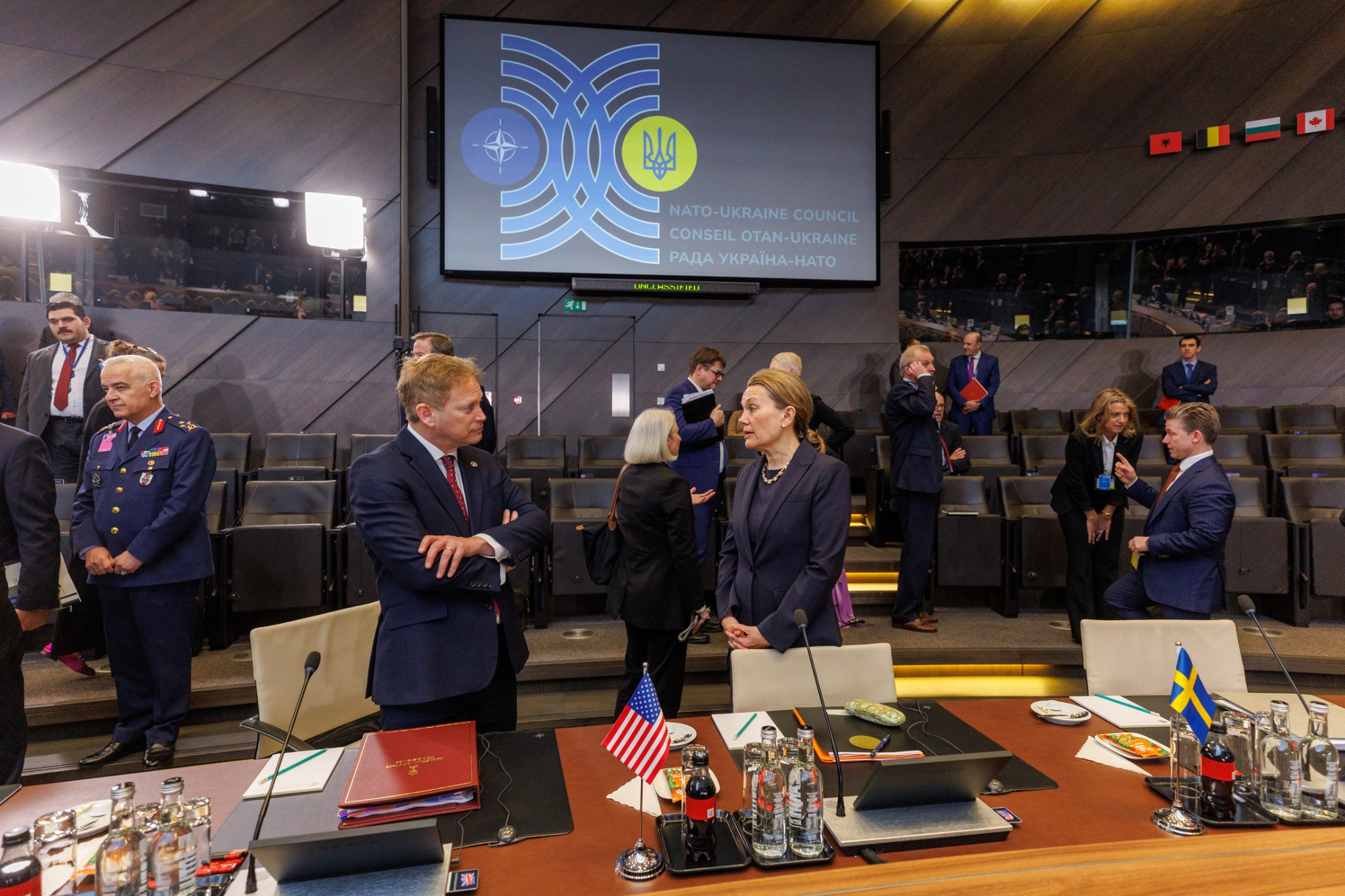 UK Secretary of State for Defense Grant Shapps with U.S. Permanent Representative to NATO Julianne Smith, February 15, 2024. Image courtesy NATO.
UK Secretary of State for Defense Grant Shapps with U.S. Permanent Representative to NATO Julianne Smith, February 15, 2024. Image courtesy NATO.
Reform NATO Collective Defense Goals for a Safer Europe
On February 10th, former President Donald Trump castigated the North Atlantic Treaty Organization’s (NATO) collective defense initiative. Although various NATO member states are failing to adhere to defense spending commitments, these types of comments empower Russia’s geopolitical leverage by sowing doubts over NATO’s long-term ability to deter outside threats. If the United States wants to help maintain NATO collective defense, and thus its own, it should acknowledge the challenges of meeting the 2% goal by certain countries, and consider advocating for more effective methods of contribution to the alliance.
NATO’s 2% Expenditure Goal, Explained
As part of Article 3 of the North Atlantic Treaty, signed by 11 European countries, Canada, and the United States in April 1949, member states committed to “maintain and develop their individual and collective capacity to resist armed attack.” This guideline has enabled member states to cooperate on conducting military trainings, strengthening technological capacities against hybrid attacks, and achieving dominance in Emerging Disruptive Technologies.
In 2014, NATO’s North Atlantic Council issued the Wales Summit Declaration. NATO Heads of State pledged to increase their defense expenditures to 2% of their Gross Domestic Product (GDP) by 2024 in response to Russia’s illegal annexation of Crimea. The Declaration’s Defense Investment Pledge further established that member states already fulfilling the expenditure goal should continue investing in their military capabilities.
Conflicts Over NATO’s Expenditure Goal
Although NATO collective defense is critical to Western security interests, various member states have fallen short of these commitments.
In 2014, the United States, Greece, and the United Kingdom were the only member states fulfilling the 2% goal with expenditures ranging from approximately 2.13% to 3.75% of their national GDP. GDP defense commitments were so low that all European member states invested around 1.47% of their collective GDP on defense. Expenditures improved through 2019 as Estonia, Romania, and Poland passed the 2% threshold for the first time. However, significant geopolitical power-players like Germany, France, and Turkey recorded expenditures below the threshold.
Recently, NATO Secretary General Jens Stoltenberg announced that 18 of the 31 member states, including Germany and France, are on pace to allocate 2% of their GDP for defense expenditures. These developments demonstrate growing efforts to increase investments in defense capabilities. However, the United States has what experts refer to as a “burden” from disproportionately contributing to NATO defense relative to other member states.
Such a burden has compelled some leaders to take harder stances against NATO countries inadequately fulfilling their pledges. As the Trump administration significantly increased funding to European defense initiatives, Trump strongly criticized NATO member states for failing to adhere to their commitments. Trump is correct to call out member states’ lack of commitment, but he has further called into question the future of the alliance by floating the idea that the United States could refuse to support member states that are attacked by outside threats.
Divisively questioning the commitment to NATO’s collective defense requirement as outlined in Article 5 weakens deterrence against Russian aggression. Statements that serve to undermine NATO unity can send a signal to Russia that member states may be unwilling to come to the defense of other in the case of an attack—thereby giving Putin the impression that he might be able to attack a small NATO state without incurring a response from the entire alliance. The more NATO is divided, the more Russia is incentivized to not only prolong its invasion but potentially escalate into other territory in the future.
Conclusion
As NATO is experiencing high political tensions threatening to undermine American-European unity, questioning the future of the alliance based on member states’ failure to commit adequate defense expenditures empowers Russia to exploit these divisions. There are legitimate concerns regarding member states’ failures to fulfill NATO’s defense expenditure threshold. To effectively mediate these concerns, the United States should explore alternative ways for NATO member states to most effectively contribute to the alliance.
As ASP COO Matthew Wallin has noted, considering the comparative defense advantages of individual NATO member states may allow for a more efficient and effective contribution to the alliance than a general 2% of GDP commitment. For example, smaller states like Estonia, which actually exceeds the 2% requirement, might provide greater utility as a contributor to cybersecurity rather than manpower considering its elite technological capabilities, smaller population size, and vulnerability to Russian attacks. On the other hand, larger states like the United States can contribute more manpower given their population advantages. Reconfiguring the commitment to better allow states to contribute their own unique defense capabilities would allow for greater flexibility and confidence in NATO’s capacity to deter outside threats.





